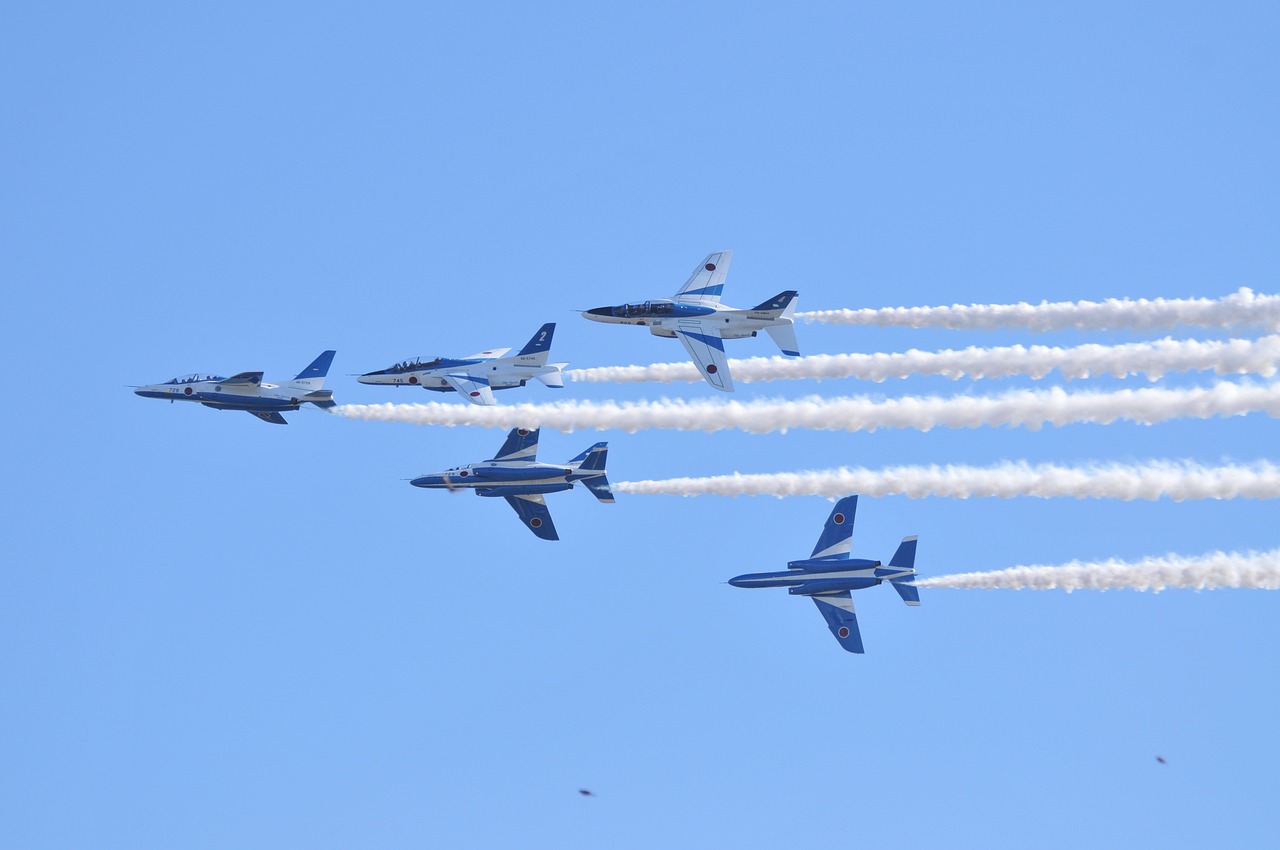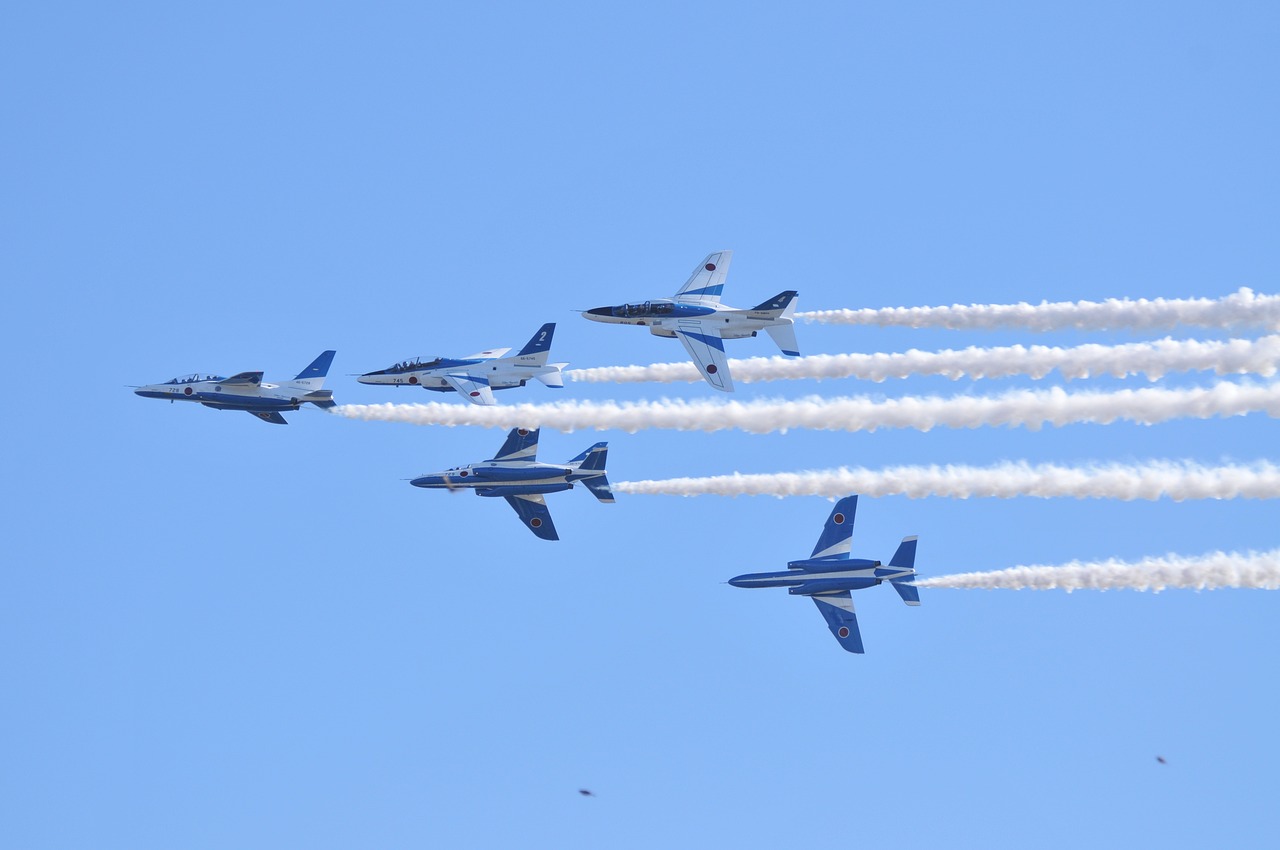Nuances of Self-Defense Techniques Against Multiple Attackers
In today's unpredictable world, understanding the nuances of self-defense against multiple attackers is not just a skill but a necessity. Imagine walking down a quiet street when suddenly, a group of individuals approaches you with hostile intentions. Your heart races, and your mind goes into overdrive. How do you react? This article dives deep into various self-defense techniques tailored for such high-stakes situations, emphasizing not just physical skills but also mental preparedness and strategic thinking. It’s about empowering yourself to navigate threatening environments with confidence and awareness.
Recognizing the dynamics of multiple attackers is crucial for effective self-defense. When faced with a group, the psychological aspect of group aggression can feel overwhelming. The sheer number of attackers can create a sense of helplessness, but understanding their motivations can shift your perspective. Often, attackers thrive on intimidation, and their strength lies in numbers. By grasping this concept, you can mentally prepare yourself to confront the situation with a level head. This section will delve into both the psychological and physical aspects of group aggression, helping you discern the nature of the threat you may face.
Situational awareness is key to preventing dangerous encounters. It’s not just about being alert; it’s about being proactive. How often do you find yourself lost in thought while walking? This is a common trap that can make you an easy target. Enhancing your awareness means actively scanning your environment and recognizing potential threats before they escalate into confrontations. Techniques such as maintaining a clear line of sight, observing the behavior of those around you, and trusting your instincts can significantly improve your situational awareness. Remember, the best fight is the one you avoid.
Knowing your environment allows you to plan escape routes effectively. Think of it like a chess game; every move counts, and having a plan can mean the difference between safety and danger. When you enter a new space, take a moment to identify exits and safe spaces. This could be a nearby store, a well-lit area, or even a crowded public place. In a confrontation with multiple attackers, these escape routes can be vital for evading danger. Always have a mental map of your surroundings, and don’t hesitate to change your path if you sense trouble.
Understanding how environmental factors, such as lighting and obstacles, can affect your ability to escape is essential. For instance, dimly lit areas can conceal threats but also hinder your ability to see and react. Conversely, well-lit areas may deter attackers but can also expose you to their aggression. This section outlines how to use these factors to your advantage. If you find yourself in a tight spot, look for obstacles—like benches or cars—that can serve as barriers between you and your attackers. It’s all about using your environment to create distance and increase your chances of escape.
Barriers can provide critical protection during an attack. Think of them as shields that give you a moment to breathe and plan your next move. When facing multiple attackers, creating distance is paramount. Use physical barriers in your environment to your advantage; whether it’s a wall, a fence, or even a group of people, these elements can help you gain the upper hand. This section will discuss how to effectively utilize these barriers to enhance your chances of escape, allowing you to maneuver safely away from danger.
This section covers various defensive techniques specifically designed for situations involving multiple attackers. The goal here is to maximize your chances of defending yourself effectively while minimizing risks. Techniques such as striking, blocking, and evasion become crucial when you’re outnumbered. It’s not about fighting back with brute force; it’s about using your agility and intelligence to create opportunities for escape. Remember, the best defense is often a good escape.
Striking techniques can be effective in self-defense scenarios. However, in a situation involving multiple attackers, precision and timing are everything. This subsection highlights key striking methods that can incapacitate or deter multiple attackers. Focus on targeting vulnerable areas for maximum impact. The eyes, throat, and groin are prime targets that can provide you with the split second you need to escape. Remember, a well-placed strike can turn the tide of an encounter.
Identifying and targeting vulnerable areas on an attacker can greatly increase your chances of success. This section provides insights into effective striking points that can disable or deter aggressors quickly. By focusing your energy on these critical areas, you can create openings for yourself. It’s like a game of darts; aim for the bullseye to maximize your impact. Understanding anatomy and knowing where to strike can give you a significant advantage in a dire situation.
Leveraging an attacker's momentum can turn the tables in a confrontation. Instead of meeting force with force, consider techniques that allow you to use an attacker’s own energy against them. This approach not only conserves your strength but can also create opportunities for escape. Imagine a wave crashing against a rock; rather than resisting, you can redirect that energy to your advantage. In this section, we’ll discuss various techniques to help you turn the tide of an encounter, making it easier to evade multiple threats.
- What should I do if I’m confronted by multiple attackers?
Stay calm, assess the situation, and look for escape routes or barriers. If necessary, use striking techniques to create an opportunity to escape. - How can I improve my situational awareness?
Practice mindfulness, actively observe your surroundings, and trust your instincts. Regularly training in self-defense can also enhance your awareness. - Are there specific self-defense classes for dealing with multiple attackers?
Yes, many self-defense programs focus on scenarios involving multiple assailants. Look for classes that emphasize practical techniques and situational training.

Understanding the Threat
When it comes to self-defense, the first step is to truly understand the threat posed by multiple attackers. Imagine walking down a dimly lit street when suddenly, a group of individuals approaches you. Your heart races, and instinct kicks in. But what if you could prepare for such a scenario before it even happens? Recognizing the dynamics of group aggression is crucial for effective self-defense. This understanding not only involves the physical aspects but also the psychological factors at play.
Group aggression often stems from a sense of strength in numbers. Individuals in a group may feel emboldened, leading to a higher likelihood of violent behavior. This phenomenon can create an overwhelming sense of fear for the target, making it essential to maintain composure and clarity. Understanding that attackers may rely on intimidation and the psychological impact of their numbers can help you counteract their tactics with your own mental strategies.
Moreover, multiple attackers can create a chaotic environment that complicates your response. The unpredictability of their movements can be disorienting. Hence, it’s vital to remain observant and aware of your surroundings. Ask yourself: What are their intentions? Are they trying to intimidate, or do they have a specific goal in mind? Understanding these dynamics allows you to anticipate their actions and respond more effectively.
In addition to psychological factors, the physical aspects of multiple attackers also require consideration. For instance, when faced with several aggressors, the chances of being overwhelmed increase significantly. This is where situational awareness comes into play. By observing the group’s behavior, you can identify potential threats and plan your response accordingly. Remember, it’s not just about physical confrontation; it’s about strategically navigating the situation.
To further illustrate the complexities of this threat, let’s break down the key components of group aggression:
| Component | Description |
|---|---|
| Intimidation | Group dynamics often create a sense of fear, making individuals feel outnumbered. |
| Distraction | While one attacker engages you, others may flank or approach from behind. |
| Psychological Warfare | Verbal taunts and threats can demoralize and confuse the target. |
| Physical Overwhelm | The risk of being physically overpowered increases with multiple attackers. |
By understanding these components, you can better prepare yourself for potential confrontations. Remember, knowledge is power. Equip yourself with the understanding of how group aggression works, and you’ll be one step closer to enhancing your self-defense skills.

Situational Awareness
When it comes to self-defense, is your first line of defense. It's not just about being alert; it's about being actively aware of your surroundings and the people in them. Imagine walking into a crowded room. Instead of just focusing on your destination, take a moment to scan the area. Who's around you? Are there any exits? Is anyone acting suspiciously? By honing your situational awareness, you can often spot potential threats before they escalate into a dangerous situation.
To enhance your awareness, consider the following techniques:
- Practice Mindfulness: Engage your senses and be present in the moment. Notice the sounds, smells, and movements around you.
- Develop a Habit of Scanning: Make it a routine to scan your environment as you move through different spaces. This could be as simple as looking for exits or observing the behavior of those around you.
- Trust Your Instincts: If something feels off, it probably is. Don't dismiss your gut feelings; they can be key indicators of danger.
Situational awareness is not just about seeing; it's about interpreting what you see. For instance, if you notice a group of individuals who appear to be agitated or overly animated, it may warrant a change in your path or pace. By being proactive rather than reactive, you position yourself to avoid confrontations altogether.
Knowing your escape routes is crucial in any self-defense scenario, especially when faced with multiple attackers. As you navigate through your environment, take note of possible exits, alleyways, and safe spaces. This mental mapping can be the difference between safety and danger. In a crowded area, for example, the quickest exit might not always be the most obvious one. Think strategically—could you duck into a store or a public building? Is there a nearby bus stop where you can quickly get away?
Environmental factors play a significant role in your ability to escape. Consider lighting, visibility, and obstacles. A well-lit area might seem safer, but it can also expose you to more threats. Conversely, darker areas might provide cover but also hide dangers. Be mindful of the layout of your environment—are there benches, cars, or walls that you could use to shield yourself from attackers? Understanding these elements can help you leverage your surroundings to your advantage.
Barriers can be your best friend during an attack. Whether it's a physical object like a table or a wall, using barriers can create distance between you and your attackers. For instance, if you're cornered, positioning yourself behind a sturdy object can give you precious seconds to plan your next move. Think of barriers as shields; they can absorb some of the impact and give you a moment to escape or fight back effectively. Always be on the lookout for anything that can serve as a barrier in your environment.

Identifying Escape Routes
In the heat of a confrontation with multiple attackers, having a clear understanding of your surroundings can be a game-changer. It’s not just about knowing how to defend yourself; it’s about having a plan to get out safely. Identifying escape routes is essential because it allows you to act quickly when danger arises. Imagine walking into a room and immediately spotting the exits—this mental preparation can save your life.
One of the first steps in identifying escape routes is to develop a habit of scanning your environment. This means, wherever you go—be it a busy street, a crowded bar, or a quiet park—take a moment to look around. Ask yourself, “If something happens, where can I go?” This mental checklist not only prepares you for potential threats but also enhances your overall situational awareness.
It's also important to consider the layout of the area. For example, in a crowded space, there might be multiple exits, but some may be blocked or crowded. Pay attention to:
- Doors and windows
- Stairs and elevators
- Any potential hiding spots
By familiarizing yourself with these features, you can quickly decide the best way to escape if a situation escalates. Remember, the goal is to create distance between you and the attackers, so knowing the fastest route to safety is key.
Moreover, environmental factors play a significant role in your ability to escape. Consider the lighting—well-lit areas can provide visibility, while darker spots may offer cover. Obstacles, like furniture or landscaping, can either hinder your escape or provide barriers against attackers. For instance, if you're in a room with a large table, using it as a shield can buy you precious seconds to make your getaway.
In summary, identifying escape routes is about being proactive. It’s about training your mind to recognize exits and safe spaces as part of your daily routine. This awareness not only empowers you to act decisively in a crisis but also enhances your confidence in navigating potentially dangerous situations.

Environmental Factors
When it comes to self-defense against multiple attackers, understanding the at play can be a game changer. Imagine you're in a crowded area, perhaps a bustling street or a dimly lit parking lot. The layout of your surroundings can significantly affect your ability to escape or defend yourself. For instance, consider the importance of lighting. Well-lit areas can provide you with better visibility, allowing you to spot potential threats before they escalate. Conversely, poorly lit spaces can conceal attackers, making it more challenging to assess the situation.
Another crucial element to consider is obstacles in your environment. These can be anything from parked cars to street furniture. Using these obstacles to your advantage can create a tactical advantage, allowing you to obstruct an attacker's path or shield yourself from their view. For example, if you find yourself cornered, moving behind a car can give you a moment to collect your thoughts and plan your next move. Physical barriers can act as a buffer, buying you precious seconds that could mean the difference between escaping and being overwhelmed.
Moreover, it's essential to recognize the presence of crowds. In a busy environment, multiple attackers may feel emboldened, but so can you. The anonymity provided by a crowd can work in your favor, allowing you to blend in and slip away unnoticed. However, it can also complicate the situation if you're not aware of your surroundings. Keeping your head up and scanning for potential escape routes is vital. By being aware of the people around you, you can gauge whether they pose a threat or if they might assist you in your time of need.
To summarize, here are some key environmental factors to keep in mind:
- Lighting: Always prefer well-lit areas for visibility.
- Obstacles: Use physical barriers to shield yourself.
- Crowds: Assess the crowd for potential help or threats.
Ultimately, the more familiar you are with your environment, the better prepared you'll be to react effectively when faced with multiple attackers. By leveraging these environmental factors, you can enhance your chances of evading danger and maintaining your personal safety.
Q: What should I do if I find myself in a situation with multiple attackers?
A: Stay calm and assess your surroundings quickly. Look for escape routes and obstacles that can provide cover or barriers between you and your attackers.
Q: How can I improve my situational awareness?
A: Practice scanning your environment regularly. Pay attention to people and activities around you, and trust your instincts if something feels off.
Q: Are there specific self-defense techniques for dealing with multiple attackers?
A: Yes, techniques that focus on quick escapes, targeting vulnerable areas, and using an attacker's momentum can be effective in such scenarios.

Using Barriers
When faced with multiple attackers, the environment can become your greatest ally or your worst enemy. Utilizing barriers effectively can provide critical protection during an attack, allowing you to create distance and enhance your chances of escape. Imagine being in a crowded area, surrounded by potential threats. Instead of panicking, you can strategically position yourself to use your surroundings to your advantage.
Barriers can take many forms, from physical objects like walls and furniture to natural elements such as trees or fences. The key is to recognize and exploit these structures to shield yourself from attackers. For instance, if you find yourself in a narrow alleyway, a parked car can serve as a protective barrier, giving you a moment to assess the situation and plan your next move. This is not just about hiding; it’s about creating opportunities for escape.
Consider the following types of barriers and how they can be utilized:
- Physical Barriers: Walls, fences, and large objects can obstruct the movement of attackers, buying you valuable time.
- Environmental Barriers: Natural features like bushes or trees can provide cover and concealment.
- Temporary Barriers: Items you can quickly grab, like bags or jackets, can be used to shield yourself momentarily.
One effective strategy is to always be aware of your surroundings and identify potential barriers as you move through different environments. This awareness can be a game-changer. For example, if you’re in a shopping mall, knowing where the nearest exits and escalators are can be crucial. Instead of retreating into a corner, you can maneuver towards an exit, using store displays as shields against attackers.
Moreover, using barriers isn't just about physical protection; it’s also a psychological tactic. When attackers see you using barriers effectively, it can create doubt and hesitation in their minds. They may not expect you to fight back or evade them so strategically, which can buy you precious seconds to escape or call for help.
In summary, barriers are not merely obstacles; they are tools for survival. By understanding how to use your environment to your advantage, you can significantly increase your chances of evading multiple attackers. Always keep your eyes peeled for potential barriers and consider how they can be used to create a tactical advantage in a dangerous situation.
Q: What should I do if there are no barriers available?
A: If there are no barriers nearby, focus on creating distance between yourself and the attackers. Use quick movements and change your direction to make it harder for them to approach you.
Q: How can I improve my situational awareness?
A: Practice mindfulness and observation skills. Regularly scan your environment, noting exits, potential threats, and safe spaces. This habit will make it easier to react quickly in a dangerous situation.
Q: Is it better to fight back or escape?
A: Whenever possible, escaping is the best option, especially against multiple attackers. However, if escape is not feasible, knowing how to defend yourself effectively can help you create an opportunity to flee.

Defensive Techniques
When faced with the daunting prospect of multiple attackers, having a repertoire of effective defensive techniques can be your lifeline. It's not just about sheer strength; it's about strategy, timing, and understanding the dynamics of confrontation. The first thing to remember is that your goal is to escape, not to engage in a prolonged fight. You want to create an opportunity to get away safely. Here are some essential techniques to consider:
One effective approach is to use distraction. By throwing an object or creating a loud noise, you can momentarily divert the attackers' attention, giving you a crucial window to escape. This technique works like a magician's sleight of hand; while they’re focused on the distraction, you can make your move. Remember, the element of surprise can be your greatest ally!
Another vital technique is to keep moving. Staying stationary makes you an easy target. If you can, always be on the move. This doesn't mean you should run blindly; instead, be strategic about your movements. For instance, if you can maneuver around obstacles, it can help you create distance and buy time. Use your environment to your advantage, whether it's ducking behind a car or weaving through a crowded area.
In addition to movement, employing defensive postures can be crucial. Positioning your body to protect vital areas such as your head and torso can minimize damage. For example, if you find yourself in a situation where you must confront an attacker, keep your hands up in a guard position. This not only protects you but also prepares you to deflect incoming strikes.
Moreover, understanding how to utilize pressure points can be a game-changer. Certain areas of the body, like the eyes, throat, and groin, are particularly sensitive. A well-placed strike to these areas can incapacitate an attacker long enough for you to escape. The beauty of targeting pressure points is that you don’t need to exert excessive strength; precision is key.
Another technique worth mentioning is the use of joint locks. If you find yourself grappling with an attacker, applying a joint lock can immobilize them temporarily. This technique relies on leverage rather than brute force, making it effective even against larger opponents. However, it requires practice to execute correctly, so consider seeking professional training to master this skill.
Finally, it's essential to remain calm and composed. Panic can cloud your judgment and slow your reaction time. Take a deep breath and assess the situation. Remember, your primary objective is to escape, not to fight. By staying calm, you can think clearly and make better decisions, whether that means finding an escape route or using a defensive technique effectively.
In conclusion, mastering defensive techniques against multiple attackers is about preparation and practice. By incorporating distraction, movement, defensive postures, pressure points, joint locks, and maintaining your composure, you can significantly enhance your chances of escaping a dangerous situation. Remember, the best defense is often a good offense—get out of the situation as quickly as you can!
- What should I do if I can't escape? Focus on defending yourself and creating an opportunity to escape. Target vulnerable areas and use your surroundings to your advantage.
- Is it necessary to learn self-defense techniques? Yes, understanding self-defense techniques can significantly increase your chances of safely navigating dangerous situations.
- Where can I learn self-defense? Consider enrolling in self-defense classes at local gyms or community centers, or look for online resources and tutorials.

Striking Techniques
When it comes to self-defense against multiple attackers, can be a game changer. These techniques are not just about throwing punches; they are about understanding the dynamics of an encounter and using your body effectively to create opportunities for escape. Imagine being in a crowded area and suddenly finding yourself surrounded. The instinctive reaction is often to freeze, but that’s where knowledge of striking techniques comes into play. They can empower you to act decisively and increase your chances of survival.
One of the most effective ways to incapacitate an attacker is by targeting their vulnerable areas. These areas include the eyes, throat, groin, and knees. Striking these points can create enough disruption to allow you to escape. For instance, a quick jab to the eyes can momentarily blind an attacker, providing you with precious seconds to flee. Here’s a quick overview of some key vulnerable areas:
| Vulnerable Area | Effect of Strike |
|---|---|
| Eyes | Temporarily blinds the attacker |
| Throat | Disrupts breathing and can incapacitate |
| Groin | Causes intense pain, often leading to a halt |
| Knees | Can destabilize the attacker, making them fall |
Now, let’s talk about the importance of using momentum. When faced with multiple attackers, understanding how to leverage their force can turn the tide in your favor. For instance, if one attacker lunges at you, sidestepping and redirecting their momentum can cause them to stumble into another assailant or even lose their balance. This technique not only deflects the attack but also creates a moment of confusion among the attackers, allowing you to escape. Think of it like a game of dodgeball; instead of trying to catch the ball, you simply let it pass and use your opponent's energy against them.
Moreover, practicing these striking techniques regularly can enhance your muscle memory, making your responses more instinctive during a real confrontation. Techniques such as palm strikes, elbow strikes, and knee strikes are particularly effective. Here’s a brief overview of these techniques:
- Palm Strikes: Utilizing the palm of your hand to strike can be safer for your wrist than traditional punches.
- Elbow Strikes: Close-range strikes that can be devastating, especially when aimed at the head or face.
- Knee Strikes: Effective in close quarters, targeting the groin or stomach can incapacitate an attacker quickly.
In conclusion, mastering striking techniques is about more than just physical ability; it’s about mental preparedness and understanding the dynamics of a confrontation. By focusing on vulnerable areas, using momentum to your advantage, and practicing regularly, you can significantly enhance your self-defense capabilities against multiple attackers. Remember, the goal is not to engage but to create opportunities for escape and safety.
Q: What should I do if I cannot escape immediately?
A: If escape is not an option, focus on creating distance and using striking techniques to incapacitate your attackers long enough to find an exit.
Q: How can I improve my striking techniques?
A: Regular practice, ideally under the guidance of a qualified instructor in martial arts or self-defense, can greatly enhance your skills.
Q: Is it safe to confront multiple attackers?
A: It is generally advised to avoid confrontation whenever possible. Self-defense techniques should be used to create an opportunity to escape rather than to engage.

Targeting Vulnerable Areas
When it comes to self-defense, knowledge is power, especially when you find yourself facing multiple attackers. One of the most effective strategies is to focus on of your assailants. These are specific points on the body that, when struck, can incapacitate or deter an attacker, giving you a crucial advantage in a dangerous situation.
Imagine you're in a confrontation, and your heart is racing. You need to act quickly, and knowing where to strike can mean the difference between escape and harm. Vulnerable areas include the eyes, throat, solar plexus, and groin. Striking these areas can disrupt an attacker's focus and give you the split second you need to make your getaway.
| Vulnerable Area | Effect of Strike | Recommended Technique |
|---|---|---|
| Eyes | Temporarily blinding the attacker | Quick jab or poke |
| Throat | Disruption of breathing | Fist strike or palm heel |
| Solar Plexus | Knocking the wind out | Elbow strike or punch |
| Groin | Intense pain and distraction | Knee strike or kick |
By understanding these vulnerable areas, you can plan your defensive moves more effectively. For instance, if you’re confronted by two attackers, targeting one in the eyes while simultaneously striking the other in the throat can create a moment of chaos, allowing you to escape. It's about creating opportunities for flight, not just fighting back.
Moreover, it’s important to practice these techniques regularly. Visualization can also be a powerful tool. Picture yourself in a scenario where you need to defend yourself. Imagine delivering those strikes with precision and confidence. This mental rehearsal can enhance your reaction time when facing real-life threats.
Ultimately, while physical techniques are crucial, remember that confidence and awareness are your best allies. The more you know about where to strike, the more empowered you will feel in a dangerous situation. Always stay alert, and be prepared to act decisively if the need arises.
- What are the most effective vulnerable areas to target? The eyes, throat, solar plexus, and groin are key areas that can incapacitate an attacker.
- How can I improve my striking techniques? Regular practice and visualization exercises can enhance your striking effectiveness.
- Is it better to try to escape or fight back? Your primary goal should always be to escape if possible; self-defense is about survival.

Using Momentum
When faced with multiple attackers, one of the most effective strategies you can employ is leveraging momentum. Imagine a bowling ball rolling down a lane; it gathers speed and power as it moves. In a confrontation, your attackers are much like that bowling ball, and you have the opportunity to redirect their energy to your advantage. By understanding how to use an attacker's forward motion against them, you can create openings for escape or counter-attacks.
To effectively utilize momentum, you first need to remain calm and focused. Panic can cloud your judgment and prevent you from seeing the opportunities around you. Instead, observe the movements of your attackers. Are they charging at you? Are they trying to surround you? Recognizing their intent will help you decide the best course of action. For instance, if one attacker lunges at you, you can sidestep and allow their momentum to carry them past you, thereby creating space between you and the rest of the group.
Here are a few techniques to consider when using momentum:
- Redirection: When an attacker strikes, instead of meeting their force head-on, redirect it. For example, if they throw a punch, use your forearm to guide their arm away from you while simultaneously positioning yourself to escape.
- Joint Manipulation: If you can grab an attacker’s arm or wrist, you can use their momentum to throw them off balance. A quick twist or pull can make them lose their footing, giving you a chance to disengage.
- Footwork: Good footwork is essential. By moving out of the way and stepping to the side, you can create angles that make it difficult for attackers to coordinate their efforts against you.
Moreover, practicing these techniques in a controlled environment, such as a self-defense class, can significantly enhance your ability to react instinctively in real-life situations. The more you drill these movements, the more natural they will feel, allowing you to respond swiftly when it counts.
Remember, the goal is not to engage in a prolonged fight, but rather to create opportunities for escape. Using momentum effectively can turn the tide in your favor, allowing you to evade multiple attackers and get to safety. Think of it as a dance; by anticipating your partner's moves (in this case, your attackers), you can lead the way to your own escape.
- What should I do if I can't avoid a confrontation? Focus on using momentum and your surroundings to create an escape route. Redirect attacks and look for opportunities to disengage.
- Is it safe to practice self-defense techniques? Yes, practicing in a safe environment with a trained instructor is beneficial. It helps build your confidence and reflexes.
- Can self-defense techniques be effective against trained attackers? While self-defense techniques can be effective, it's crucial to prioritize escape over confrontation, especially against trained individuals.
Frequently Asked Questions
- What should I do if I find myself surrounded by multiple attackers?
The first step is to stay calm and assess the situation. Look for escape routes and try to position yourself where you can see all attackers. If escape isn’t possible, use defensive techniques to create distance, and focus on incapacitating the nearest attacker to make your escape easier.
- How can I enhance my situational awareness?
Improving your situational awareness involves training yourself to notice your surroundings. Practice scanning your environment for potential threats, such as suspicious individuals or exits. Regularly engage in activities that require focus and awareness, like martial arts or self-defense classes, to sharpen your instincts.
- Are there specific striking techniques that work best against multiple attackers?
Yes! Striking techniques that target vulnerable areas—like the eyes, throat, or groin—are particularly effective. Quick, decisive strikes can incapacitate an attacker and buy you precious time to escape. Remember, the goal is to create an opportunity for flight, not to engage in prolonged combat.
- How important is it to know my environment in a self-defense situation?
Knowing your environment is crucial! Familiarity with your surroundings helps you identify potential escape routes and safe spaces. Pay attention to lighting, obstacles, and barriers that can be used to your advantage during an encounter. Your environment can be your best ally in a dangerous situation.
- Can using barriers really help during an attack?
Absolutely! Barriers can provide critical protection and distance from attackers. Use walls, furniture, or any available objects to shield yourself and create space. This strategy can delay attackers and increase your chances of escaping unharmed.
- What is the role of mental preparedness in self-defense?
Mental preparedness is just as important as physical skills. Being mentally ready for a confrontation helps you stay calm under pressure and make quick decisions. Visualizing potential scenarios and practicing your response can significantly enhance your confidence and effectiveness in a real-life situation.



















